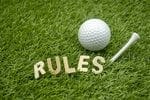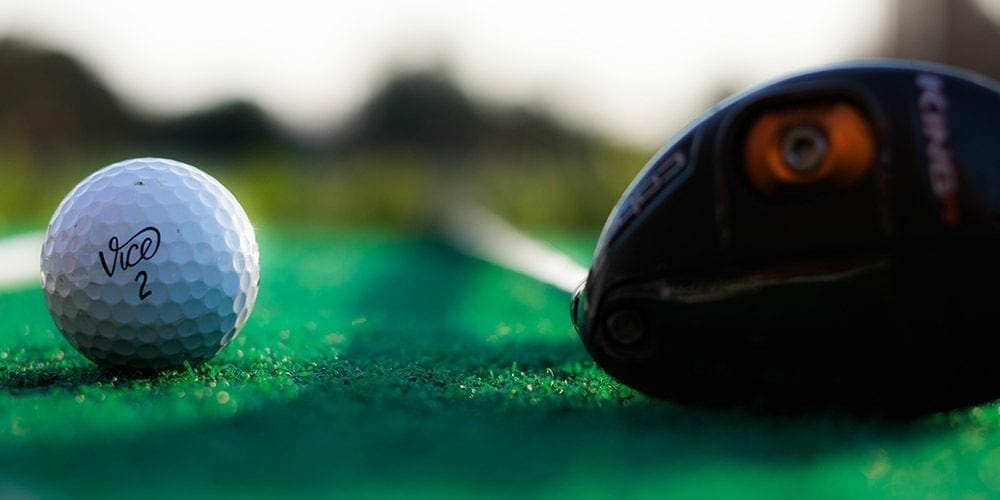In this guide, we’re going to teach you how to play golf.We’ll also give you some pointers on what equipment you’ll need to get started, where you can play, how to golf effectively, and talk briefly through the basic rules.We’ll discuss some of the challenges to kicking off your golfing journey, and address some of the common misconceptions around the sport, including the stereotype that financial status is a barrier to entry.There’s no getting away from the fact that golf can be a difficult sport to master and can seem hard to understand at first glance; that’s why we at Golferpros created this definitive guide…
Chapter 1
Understanding the Golf Industry
Before you get started with playing golf, you might want to know a little more information about the sport and what makes it so popular.Though it may seem like quite an exclusive sport, it has an enormous following and also contributes significantly to the economy.

Here are some key statistics about golf:
- 23.82 million golf participants annually
- 144,024 boys enrolled in high school golf activities
- 4.14 million registered golfers in Europe
- 13 million TV viewership of The Masters’ tournament
- $7.5 billion direct economic output of the golf industry in Florida alone
As you can see, the sport is vast and has far-reaching economic advantages.
There are countless jobs, vast amounts of revenue, and millions of lives that have been impacted by golf and its related industries.
Though golf is considered to be a small piece of the pie when compared to larger professional sports, it is by no means a small or uninfluential industry. Golf is becoming more and more common.
By learning to play golf, you are not in the minority.
You’re actually joining a traditional sport with a rich history; one that is growing in popularity by the day.
While you’re learning how to play golf, remember to keep all of these things in mind and savor the experience of participating in such a sport.
Chapter 2
Things to Remember Before You Start
Now that you know a little bit more about golf, you can start getting serious about playing.We’re going to cover everything in detail; from what equipment you’ll require to get started, what the rules are, where you can play, and where you can find resources on improving your game.But first, I want to emphasize a point that I think is vitally important to enjoying a long hobby or career in golf.

Here are some key statistics about golf:
- 23.82 million golf participants annually
- 144,024 boys enrolled in high school golf activities
- 4.14 million registered golfers in Europe
- 13 million TV viewership of The Masters’ tournament
- $7.5 billion direct economic output of the golf industry in Florida alone
As you can see, the sport is vast and has far-reaching economic advantages.
There are countless jobs, vast amounts of revenue, and millions of lives that have been impacted by golf and its related industries.
Though golf is considered to be a small piece of the pie when compared to larger professional sports, it is by no means a small or uninfluential industry. Golf is becoming more and more common.
By learning to play golf, you are not in the minority.
You’re actually joining a traditional sport with a rich history; one that is growing in popularity by the day.
While you’re learning how to play golf, remember to keep all of these things in mind and savor the experience of participating in such a sport.
Chapter 3
The Beginner’s Guide to Golfing Equipment
If you want to play golf, you’re inevitably going to need some equipment.This comes as no shock, but what might come as a surprise is the price of golf gear.But do not fear; not all golf equipment comes at an astronomical cost and there are some bargains to be had, providing you know where to look.

Golf has never been known as an accessible sport for those on a budget, but there are ways to get around spending thousands of dollars on equipment.
Before we go into ways to save money on golfing equipment, we need to determine exactly what we’ll be needing to form a respectable assortment of golf gear.
Don’t worry, we know the process of starting any new sport can be overwhelming, but we’ve compiled a user-friendly, beginner’s guide to understanding the golfing essentials.
While the most advanced golfers will most probably spend a significant amount of money on expensive equipment, this really doesn’t need to be the case for beginners or those who golf infrequently for fun.
The equipment that is most ideal for a beginner golfer doesn’t have to cost the world. It can be quality, and affordable.
By breaking down the minimum essential equipment, we’ve established a complete list of golf gear categories, allowing you to easily identify what you need to kick start your journey on the golfing scene.
Clubs
First up are clubs. Clubs are obviously vital to your golfing experience but are also perhaps the most complicated component of your equipment.
For a beginner, this can be a daunting task.
If you have no prior experience with choosing or purchasing golf clubs, we’ll give you all the info you need to make that perfect selection.
As a rule of thumb, a brand new set of clubs and a club bag would cost you well into the thousands of dollars.
However, you can attain a full set of clubs for well under that if you are savvy and informed.
We recommend that you purchase a cheaper complete set online.
Many online stores offer this more affordable option.
You can typically get a full set of golf clubs including headcovers and a golf bag for under $500.
If you’re starting out, we recommend that you try to find a set which includes at least a driver, a hybrid, 2 irons, a wedge, and a putter.
For a pro, these clubs will seem amateurish and unsuitable for their needs because they are not fully customized.
For a beginner, on the other hand, these package deals represent excellent value and allow newcomers to enjoy the sport, whilst remaining firmly within their budget.
Though these sets are usually very cheap when compared to more advanced clubs, that doesn’t mean they’re low-quality.
Now, some of them may be made of inferior materials due to the difference in cost, but they can certainly serve the same purpose.
These types of golf club sets will serve a beginner well and can be surprisingly effective on the green; providing huge value for money.
Most beginner sets include a driver, fairway wood, hybrid, several irons, putter, golf bag, and headcovers.
That’s a ton of value packed into a very affordable price, and the club selection is more than adequate for the beginner golfer to start getting a feel for striking the ball with different clubs.
If you want to keep an even tighter budget, there are other options…
Though we don’t really recommend it, you could get your clubs used from a resale store.
You can also find and purchase various golf clubs individually and piece together to create your set, one club at a time, by finding good deals across several days or weeks.
If you can manage this, that’s fantastic!
The reason that we don’t typically recommend it, is because you generally end up getting a wildly inconsistent grab bag of clubs that don’t match and this can interfere with the way you swing and feel your clubs.
It can also be incredibly time-consuming to try and track down all those clubs to construct a set from scratch.
While there are extremely frugal ways to acquire equipment, we recommend just making the minor initial investment in a good beginner set, which can be easily sourced online.
The prices are reasonable enough to justify and will save you a lot of time and effort.
Golf Balls
The next thing that you’re going to need is golf balls.
As the focus for the entire sport, it’s important that you have a good supply of these.
Sounds obvious, right?
Though you might think of golf balls as insignificant, you’d be surprised at how much they impact your game and individual performance.
For professionals, it’s always important to carefully select golf balls; meeting your exact specifications.
For beginners, in all honesty, it really doesn’t matter as much.
When making your choice of golf balls, you can more than get by with the cheaper alternatives; particularly while you’re still learning.
There’s simply no requirement at this stage in the game, to purchase the newest and most highest-tech balls, as they appear on the market.
If you have the urge to spend big on golf balls, just remember that, as a beginner, you will likely be losing a lot of them.
It’s not worth your money to invest heavily unless you are a capable and experienced professional.
When you’re looking for balls as a beginner, your focus should be on finding a ball that is affordable, but also something that will provide you with a quality surface to strike.
Some packs of golf balls can cost well over $50, but, for now, you’ll manage just fine with boxes that retail for less than $10.
Golf balls generally come in packs of 15 or 18, and a good target for cost-per-ball for a beginner is anywhere from 40 cents to $1.
By spending less on balls, you can reserve more money for your longer-term equipment, such as your bag and clubs: when you are ready for a higher quality ball, you can always upgrade.
If you don’t want to buy new balls, there are other options available to you…
You could always try to buy used golf balls from sports stores or your network of golfing family and friends, providing they’re suitable.
Again, we don’t recommend this route, but we do recognize that it may be a good choice for those with a limited budget.
The reason that we don’t necessarily endorse this is that generally, these golf balls are in very poor condition.
If you want to get a consistent feel for hitting a ball, one of the worst ways to do it is by using used golf balls.
They will have already been struck many times, and they likely won’t be in their original shape.
The surface will also likely be full of dirt and dings, which doesn’t provide you with the best surface to strike.
If your budget is very tight, however, and you’re just looking for something super basic to have some fun with, you can undoubtedly track down and purchase some used golf balls. They are generally very cheap so you won’t mind if you lose them.
Tees
Now that the more complicated pieces of golf gear are out of the way, we move on to a very simple piece of equipment that you’ll need to invest in – the tee.
The main factor affecting which tees you select to use will be your ideal tee height.
Your tee height will affect how well you can strike the ball.
It’s an underrated factor in your golfing success.
While some golfers neglect to pay attention to the significance of tee height, in the beginning, we would recommend that you establish your tee height right away and get the appropriate tees so that you can become more accustomed to your preferred height from the start.
If you are continually changing tees and tee height, it will be harder to settle into a groove as a golfer and find a stroke that works well for you. Luckily, tees are not a difficult or expensive thing to shop for.
They are very affordable, and while you have many options, each one is versatile. For beginners, it’s generally recommended that you opt for a very large tee since you can always adjust it by pushing it further into the ground.
The drawback to getting a very large tee is that they are unwieldy and take up more space in your bag. Not every golfer will be okay with handling these large tees and trying to fit them into their routine.
This might not be an issue at all for you, but it’s something to keep in mind when shopping for tees.
The process of selecting a tee height is one that’s determined by trial and error. That’s why you should start out with a large tee and adjust it as needed.
Once you have determined a tee height that allows you to get the ideal strike on a ball, you can purchase tees that are actually designed to sit at that height, and you can stop having to push them deeper in the ground to get the right height.
Generally, tees are incredibly affordable. You can buy almost any decent brand of tees in packages of 50 or more for less than $5 per package.
Tees will likely be the smallest upfront investment in learning to play golf, but keep in mind that it is a recurring cost because you will inevitably go through them pretty quickly.
Gloves
Gloves are arguably one of the most prominent symbols of golf today, and some professionals can pay upwards of hundreds – or even thousands – of dollars per set.
But, in reality, gloves should be a very basic (and inexpensive) part of your golfing ensemble; particularly for beginners. You can pick up a quality set of golfing gloves online for as little as $10.
They are designed primarily to improve your grip and subsequently, improve your overall swing.
It goes without saying, that achieving a good grip is important when trying master a consistent and powerful swing; if you can’t grip your club correctly, your shots will be skewed, and you’ll find yourself pulling or hooking balls much more often.
When shopping for gloves, it’s also important to consider comfort.
A comfortable pair of gloves will avoid the need to continually adjust due to itchiness or discomfort, and will generally improve your game.
Shoes
As you’ll be walking around in them for what could end up being many hours, it’s imperative that you find a durable, comfortable pair of shoes.
Trust me when I say; this is one thing that you definitely don’t want to skimp out on.
You should shop around and really do your research before you reach your decision on a pair of golf shoes.
They don’t just need to be comfortable, they also need to have a proper grip to provide you with a safe surface for stepping on when you find yourself in the bunker or in the rough.
A good name brand pair of golfing shoes will likely cost upwards of $100, but they are well worth the investment if you’re looking to take up golf as a hobby.
Chapter 4
Skill Development
Ok, let’s say you now have all the right equipment; chances are you want to jump right in and start playing golf.But, before you take the plunge, there are a couple of things you should know before you tee off for the first time…

This may seem obvious, but it’s pretty important.
Learning the fundamentals – like hitting a golf ball – is crucial to your success and enjoyment when playing golf.
To start with, you’ll want to focus your attention on learning to swing with a driver, wood, iron, wedge, and putter.
And trust me when I say this; hitting a golf ball is now walk in the park. Particularly for those who have literally never done it before.
There are seasoned pros who still struggle with getting a consistent strike that puts them in the best situation to walk away with more birdies than bogeys (if you’re scratching your head at these terms, check out a recent post we did on golf terminology).
Lessons
One way to get ahead of the curve and accelerate your learning is by enrolling in golf lessons.
This might sound like the sort of thing that a teen does during the summer, but most of the time, adults are perfectly welcome in a golf lesson class, and you shouldn’t ever feel embarrassed about enlisting the help of one of these classes or signing up for one-to-one tuition.
It’s probably one of the best ways to learn and will reduce the number of bad habits you develop.
Generally, golf lessons are offered by local golfing professionals, golf stores, or country clubs. These lessons will give you the basics when it comes to swinging various types of clubs and striking the ball well, and the lessons will, of course, become more advanced as your skill level improves.
Driving Range
Another way to obtain some golfing experience is to head to your local driving range.
Aside from being a really fun day out for golfing enthusiasts, a driving range is a great way to learn how far you can hit the ball, how much power to use, and which way your balls tend to pull or hook.
A driving range is a great place to get some consequence-free swings in and really experiment and develop your swing.
For seasoned golfing professionals, it’s also a great way to tinker with, and improve your swing; particularly if you just want to make some adjustments or try some variations.
Home Practice
Though you may think your golf-practicing options are limited whilst you’re at home, there is one very important element to the game that can be enhanced without having to make a trip to the golf club; putting.
Putting is really easy to practice at home, even if you don’t want to purchase a dedicated putting machine.
All you need to do is set down a cup on your floor and putt away.
Don’t get me wrong; this isn’t a way to fine-tune your putting to a professional standard, but as a beginner, you can get a feel for your putter by doing this.
But if you prefer a more authentic feel, you can practice putting in your backyard; proving you’re ok with having a small hole dug out of your lawn, that is.
And if that’s not an option, you can always practice your swing.
No ball needed; just simply swing away.
And if your yard is big enough, try getting hold of some plastic balls. They’re no good for a live game but are perfect for practicing that swing.
These balls can be found almost anywhere online, and they’re very affordable. Simply buy a pack, go out to your backyard, and hit them around to work on your swing.
Chapter 5
The Rules of Golf
If you are planning on learning to play golf, you’re going to need to know the rules of the game.And there are plenty…But do not fear; from the basic to the incredibly complicated – we’ll talk you through it all.

The Basics
If you are very unfamiliar with golf as a sport, this section will be extremely useful to you.
We’re going to explain briefly, exactly how golf works.
Golf is a sport in which players compete as individuals.
Essentially, the objective is to putt your ball in any of the given course holes, in the least amount of shots; in essence, the fewer swings you take to putt, the better your score will be.
The player with the lowest overall score at the end of the round of golf wins the game.
Any form of contact with the ball in an effort to advance your play, or put it in a more favorable position is strictly forbidden unless, of course, you’re contacting the ball with the golf club.
Golf is played outdoors on a golf course, and a round of golf usually consists of either 9 or 18 holes.
Scoring
As previously mentioned, the general aim of golf is to score the fewest points; this is achieved by putting in the fewest amount of swings.
Now, before we move on, it’s probably worth noting here that each hole on a golf course has a pre-determined score attached to it, also known as par.
This score is determined by the game scorers, and it is based on the average number of strokes required to putt on any given hole, e.g. par-3 would be completed in 3 strokes on average.
Most holes are either par-3, par-4, or par-5.
Your performance on any given course hole, and throughout the game more generally, will be determined by how above or below par you are, e.g. are you completing the hole and putting your ball in fewer than average shots, or are you taking more than average?
If you finish a hole with fewer shots than par, you’re doing well and your score will be positively impacted. If this is the case, one of the below scores will be given:
- Birdie – one shot below par
- Eagle – two shots below par
- Double eagle – three shots below par
- Ace – the famous ‘hole-in-one’
If you finish a hole with the same number of pre-determined shots, e.g. par, your score would be ‘on-par’.
For example, if par on a given hole was 3 and you completed the hole in three stokes, you would finish that hole on par.
If however, you finish a hole with more shots than par, your score will be negatively affected, e.g. it will increase (remember, the aim of golf is to achieve the lowest possible score…)
If you do end up finishing below par, you’ll be given one of the below scores for that hole:
- Bogey – one shot above par
- Double bogey – two shots above par
- Triple bogey – three shots above par
In summary…
Get the ball in the hole in as few shots as possible!
Chapter 6
Mastering Your Swing
Once you have all the preliminary knowledge that you need to get started, you’re going to want to start refining your skills and mastering your swing.Taking the time to evaluate and improve your swing; giving you more control over your ball placement.This will allow you to adjust your technique to suit any given hole.

The best way to learn how to swing a golf club effectively is by, well, swinging a golf club…
Practice makes perfect is a soundbite that certainly springs to mind!
But visual aids help too. This YouTube video will provide you with some top tips on how to strike the perfect drive, including how to keep it straight and on course.
This is one of the most common issues that beginner golfers face; hooking or pulling the ball happens to those who haven’t yet refined their swing.
Mastering your swing is about a lot more than just being able to hit a ball. It entails a total transformation in the way that you carry yourself while swinging and your whole-body posture.
When refining your swing, you need to analyze everything including your footwork, shoulders, grip on the club, foot placement, and breathing. Looking at the ‘bigger picture’ in relation to your swing and what effect each factor has on the others, will show you where you’re going wrong and allow you to make adjustments as required.
Chapter 7
Where to Play Golf
Though a round of golf has much to offer to a golfer, there is one significant drawback.Finding a suitable location to play golf can be quite challenging if you don’t have a country club or public course near you.Even if you do have a course near you, they can be quite expensive.

A round of golf isn’t cheap, and this can be a considerable barrier to entry for beginners.
The driving range, however, is significantly cheaper with many centers offering 50 or 100 balls for less than $10.
There’s not really a good way to practice real golf swings outside of playing on a course or going to the driving range. So, if you’re going to learn to play golf, you should be prepared for the reality that it costs money; a cost that is ongoing.
To help mitigate these costs, you can purchase a yearly membership at your local club; allowing you unlimited access for an all-inclusive fee.
If you golf more than a couple of dozen times over the course of a season, membership of a club is definitely worth some consideration.
Wrapping Up
Golf is one of the greatest and most popular American sports, but it remains largely neglected by many people because of some of the misconceptions and barriers to entry we’ve discussed above.
In recent years, however, it has become easier to participate in the sport as affordable gear, both new and used, continues to appear on the market; this makes it possible for anyone to enjoy golf.
Golf can seem like a complicated and frustrating sport, but it contains many life lessons and comes with very tangible rewarding results from hard work and perseverance, and it’s extremely enjoyable.
We hope you enjoyed our definitive guide and hope that it helps you on your journey to becoming the next Tiger Woods.
We’re always open to learning new things and consistently want to improve our site information, so if you think we’ve missed anything, please leave a comment!
Happy golfing!

One response
Next week, my brother and his friend are wanting to go play some golf at one of the local country clubs. I like how this article talked about how practice makes perfect when it comes to swinging. I will have to tell my brother that he will have to practice his swing before he and his friend go to the country club.